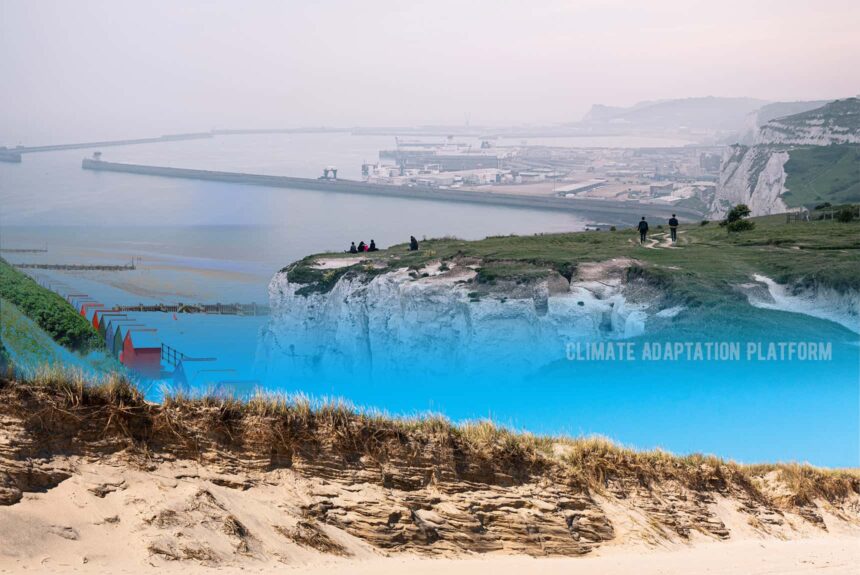For the property and business owners living on the coasts of Norfolk county, it is just a matter of time before coastal erosion will send their properties into the ocean.
A caravan site has fallen on its soft cliffs, which are made of clay and sand.
The Economist article, “The challenge of coastal erosion in Britain”, shares the speed of coastal erosion in the area and the parts of the county that has already disappeared due to it.
Here are some snippets from the article:
- Norfolk, a county on the east coast of England, loses an average of 0.4-2 metres of coastline every year in various locations.
- Three kilometres from Happisburgh, the old fishing village of Eccles on Sea has almost entirely gone; the site of another medieval town, Shipden, has long been submerged. The Committee on Climate Change, which advises the government, reckons that up to 82,100 properties across England could fall into the sea by the end of the century; most of those at risk in the next two decades are in Norfolk or up the coast, in Yorkshire.
- By 2055 the heart of Happisburgh—including the pub and a 14th-century church—will be at risk of toppling into the sea.
The Eastern Daily Press’ “What happens when the Norfolk Coast Path falls into the sea?” explains that the Coastal erosion of Norfolk’s soft cliffs has been going on for thousands of years, but climate change effects such as the sea-level rise and more frequent storms can exacerbate erosion.
The medieval map of the area shows several settlements surrounding the coasts that have long disappeared under the sea (Hickey, 2022).
It was after the Second World War when larger towns built substantial sea defences in the form of groynes and revetments in response to a great flood in 1953 when more than 300 people on the east coast died. But as these defences aged and maintenance costs blew up, attitudes have shifted (Hickey, 2022).
In the 1990s, guided by the Environmental Agency, local authorities decided to let erosion have its way and drop all coastal protection based on the costs and economic value of the area (The challenge of coastal, 2022).
The challenge of coastal (2022) further explains:
- While in some areas, nature does some natural protection as the salt marshes act as a buffer from floods, and large dunes slow erosion. In other regions, man-made defences like seawalls, and the piling of sand along the coastline, offer some protection against erosions. However, Happisburgh and other rural villages lack natural protection and resources to build such costly defences, driving local authorities and the Environment Agency 2004 to release a draft shoreline management plan to let existing coastal defences fail.
- The question remains: what to do with the properties at risk of disappearing. These property owners cannot buy insurance for erosion, nor does the Environment Agency want to overcompensate them for their property for fear that it will drive owners to construct new houses in the area.
- As a solution, the North Norfolk District Council devised a new scheme to allow permission to build on Happisburgh or nearby towns so that private developers would buy the land that was about to fall off the cliff, allowing homeowners to move out of the area without depending on the government to buy them out.
Whether the scheme will be successful before the tides eat away the cliff where these properties stand remains to be seen. In the meantime, the district council has the moral obligation to help relocate the community before their homes tumble into the ocean (The challenge of coastal, 2022).
Sources:
The challenge of coastal erosion in Britain. (2022 June 23). The Economist. Retrieved from https://www.economist.com/britain/2022/06/23/the-challenge-of-coastal-erosion-in-britain
Hickey, D. (2022 January 29). What happens when the Norfolk Coast Path falls into the sea? Eastern Daily Press. Retrieved from https://www.edp24.co.uk/news/norfolk-coast-path-erosion-and-rollback-8633778



Leave a Reply